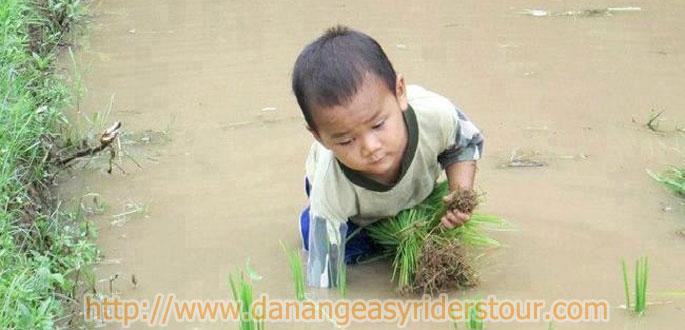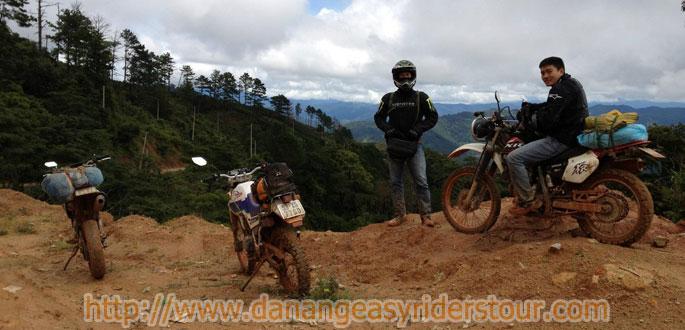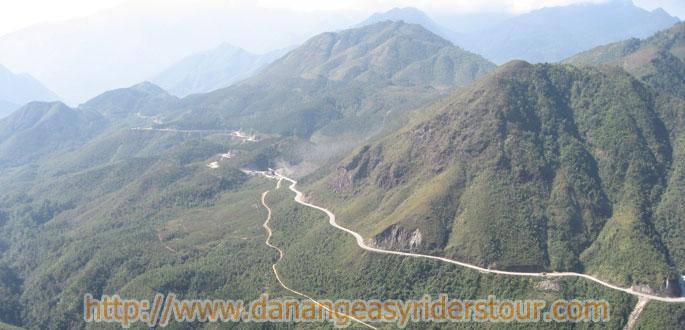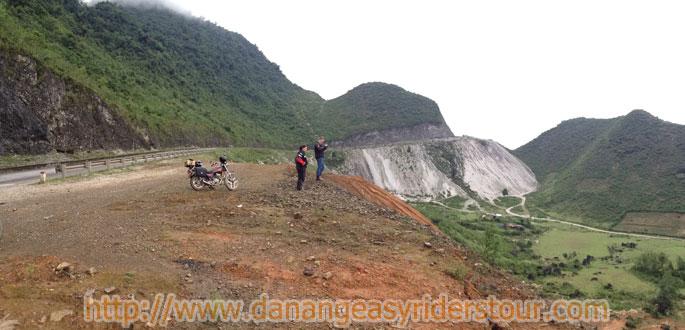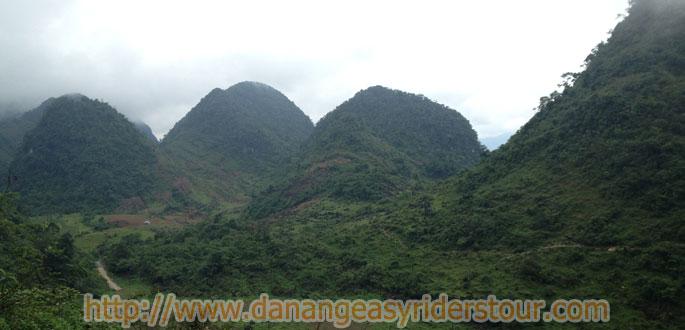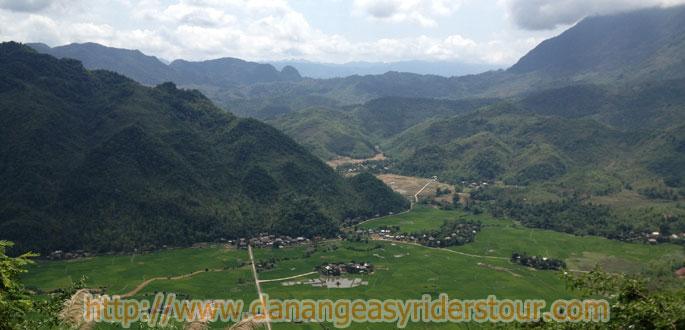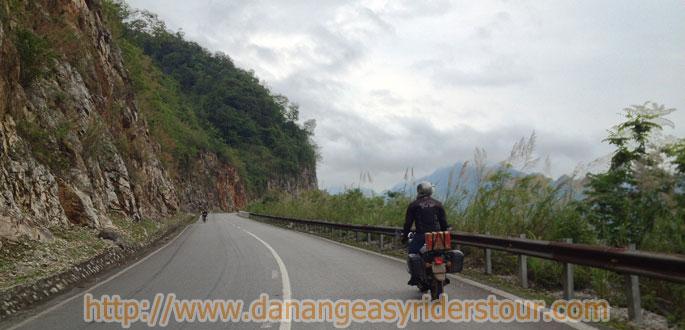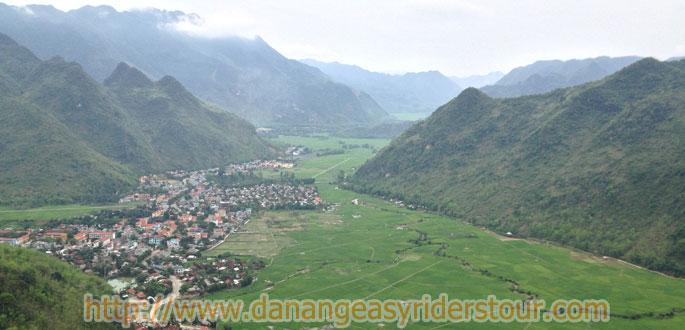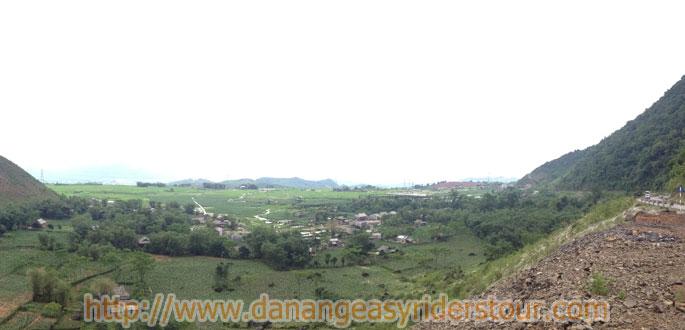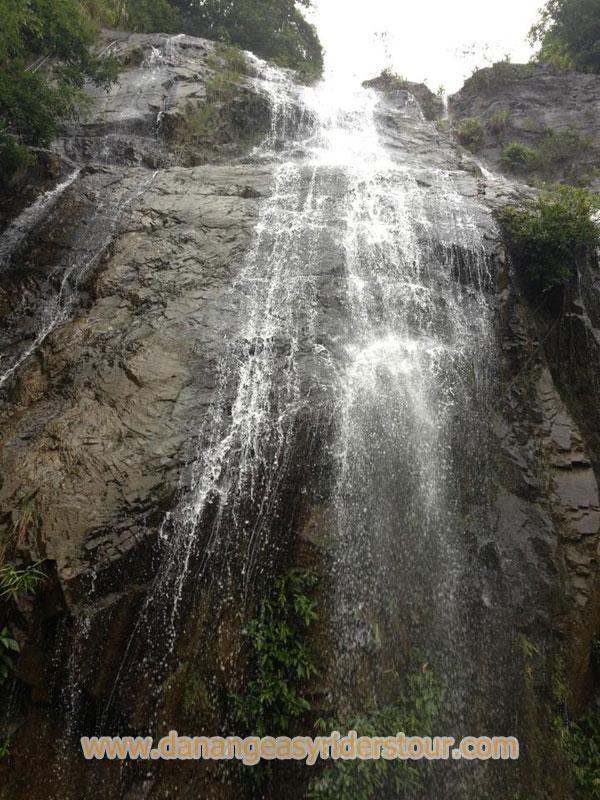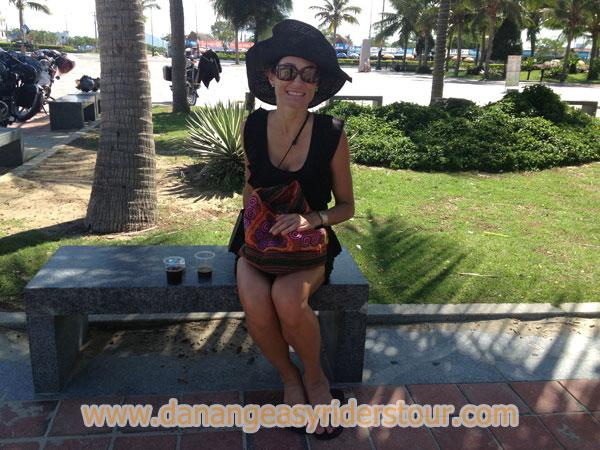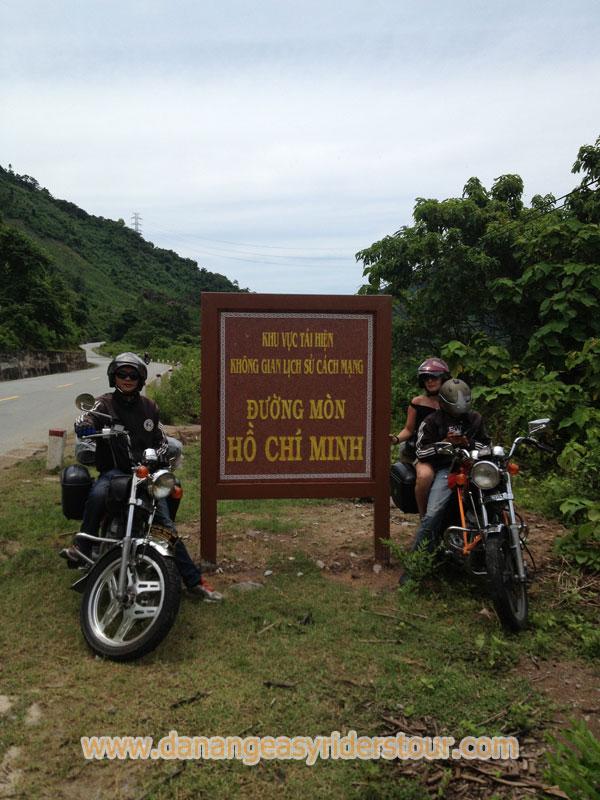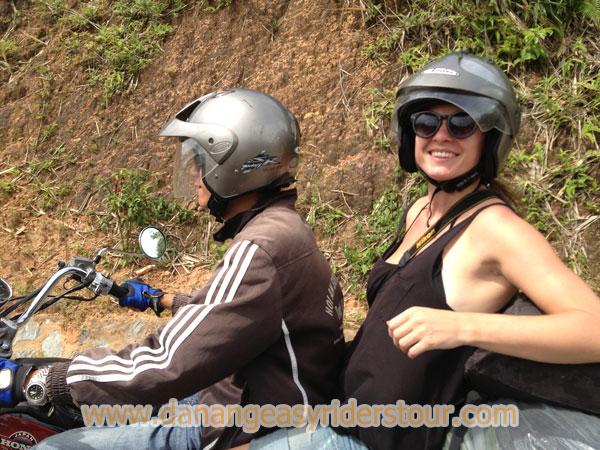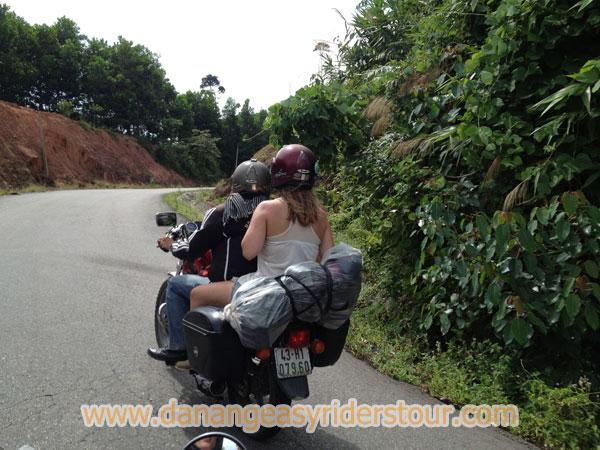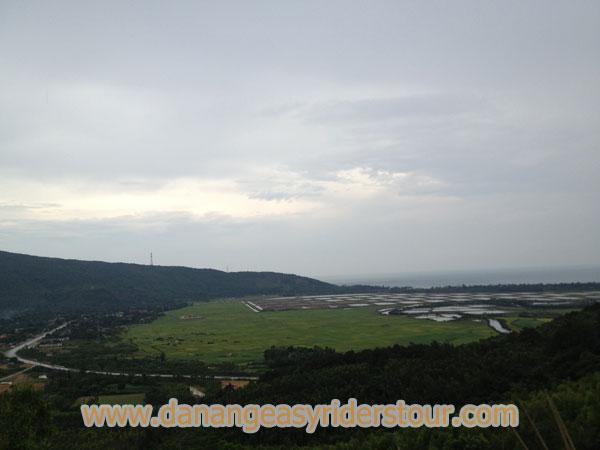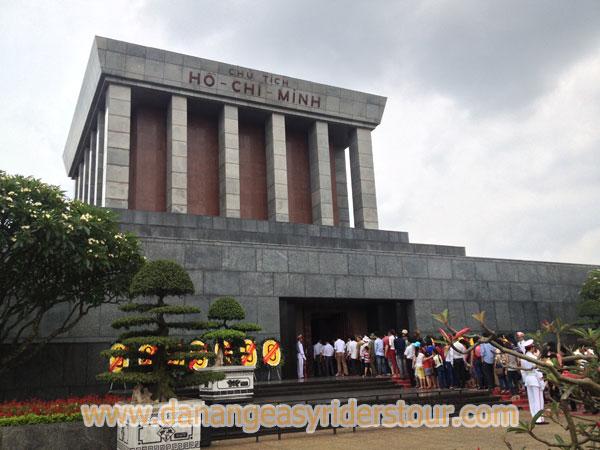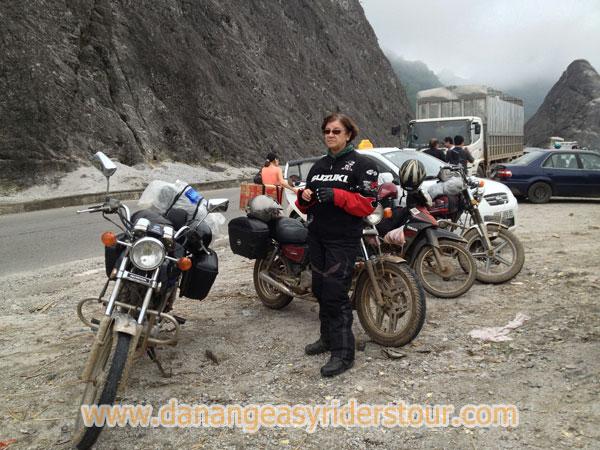The Battle of Đắk Tô was a series of major engagements of the Vietnam War that took place between 3–22 November 1967, in Kontum Province, in the Central Highlands of the Republic of Vietnam (South Vietnam).
The action at Đắk Tô was one of a series of People`s Army of Vietnam (PAVN) offensive initiatives that began during the second half of the year. North Vietnamese attacks at Lộc Ninh (in Bình Long Province), Song Be (in Phước Long Province), and at Con Thien and Khe Sanh, (in Quảng Trị Province), were other actions which, combined with Đắk Tô, became known as "the border battles."

Battle
The first fighting of the new operation erupted on 3 November and 4 November when companies of the 4th Infantry came across PAVN defensive positions. The next day the same thing occurred to elements of the 173rd. The American and ARVN troops soon applied a methodical approach to combat in the highlands. They combed the hills on foot, ran into fixed PAVN hill-top defensive positions, applied massive firepower, and then launched ground attacks to force the North Vietnamese off. In all of these instances, PAVN troops fought stubbornly, inflicted casualties on the Americans, and then withdrew.

Members of Co. C, 1st Bn, 8th Inf, 1st Bde, 4th Inf Div, descend the side of Hill 742, located five miles northwest of Dak To. 14–17 November 1967.
To expand the coverage of supporting artillery fires, the 4th Battalion of the 173rd was ordered to occupy Hill 823, south of Ben Het, for the construction of Fire Support Base 15. Since the rest of the battalion`s companies were already deployed elsewhere, the 120 men of Bravo Company would combat assault onto the hilltop by helicopter alone. After several attempts to denude the hilltop with airstrikes and artillery fire, Bravo company landed unopposed that afternoon, but the hill was not unoccupied. Fifteen minutes later, contact was made with the North Vietnamese. The battle that ensued raged at close quarters until early the following morning when elements of the 66th PAVN Regiment withdrew, leaving behind more than 100 bodies. Nine Americans of Bravo Company, 4/503 also lay dead and another 28 were wounded.[14]

Calling in air and artillery support, Hill 823
The following morning Bravo Company was relieved by Lieutenant Colonel David J. Schumacher`s 1/503, which (against the admonitions of Colonel Livsey) was divided into two small Task Forces. Task Force Black consisted of Charlie Company supported by two platoons of Dog Company and Task Force Blue which was composed of Alpha Company and the remaining platoon of Dog. Task Force Black left Hill 823 to find the North Vietnamese who had attacked B/4/403. At 08:28 on 11 November, after leaving their overnight laager and following a PAVN communications wire, the force was ambushed by the 8th and 9th Battalions of the 66th PAVN Regiment and had to fight for its life.[15] Task Force Blue and Charlie Company 4/503 drew the job of going to the relief of the beleaguered task force. They encountered fire from all sides during the relief attempt, but they made it, reaching the trapped men at 15:37. U.S. losses were 20 killed, 154 wounded, and two missing.
The commanding officer of Task Force Black, Captain Thomas McElwain, reported an enemy body count of 80 but was commanded by Schumacher (whose conduct of the action later came under severe criticism) to go out and count again.[16] He then reported back that 175 PAVN soldiers had been killed. He later stated that "If you lost so many people killed and wounded, you had to have something to show for it."[17] McElwain and Schumacher later clashed over McElwain`s recommendation for a decoration for Private First Class John Andrew Barnes, III, who had leapt on a grenade and sacrificed his life to save wounded comrades during the action. Schumacher refused to endorse the recommendation, stating that he did not think medals were for "men who committed suicide."[18] Barnes was later awarded the Medal of Honor.

The build-up at Đắk Tô
Simultaneous with this action was a North Vietnamese attack on the three companies of the 3/8th Infantry of the 4th Infantry Division on Hill 724. Beginning at 13:07 and lasting for thirty minutes, a mortar barrage rained onto the battalion`s laager site. North Vietnamese troops then charged out of the jungle to the attack. By the time the action ended at 19:03, 18 Americans were dead and another 118 were wounded. The 4th Infantry claimed that 92 North Vietnamese had died in the clash.[19]
On the night of 12 November, the North Vietnamese launched the first of many rocket attacks against the airstrip at Đắk Tô, firing 44 missiles. By 08:00 on 15 November, three C-130 Hercules transport aircraft were in the turnaround area as a PAVN mortar barrage landed squarely on the aircraft, destroying two of them. The resulting fires and additional incoming mortar fire caught the ammunition dump and fuel storage areas a blaze with explosions continued all day and into the night. During that night`s incoming shelling, a lone mortar round landed on two steel containers of C-4 plastic explosive. Both detonated simultaneously, sending a fireball and mushroom cloud high above the valley and leaving two craters 40 feet deep. This was said to be the largest explosion to occur in the Vietnam War, knocking men off their feet over a mile away. The explosion destroyed the entire 15th Light Equipment Company compound next to the ammunition dump but miraculously no one was killed. Engineer Lieutenant Fred Dyerson thought "it looked like Charlie had gotten hold of some nuclear weapons." Although more than 1,100 tons of ordnance were destroyed during the explosions and fires, this was as close as the North Vietnamese would get to taking Dak To. The rapid deployment of allied forces had upset the North Vietnamese offensive and had thrown them onto the defensive. Previous actions had battered the 66th and 33rd PAVN Regiments, and they began a southwesterly retreat, covered by the 174th Regiment. The Americans and the ARVN then began to run into tenacious rearguard actions. To prevent a repetition of the artillery attack against its base camp, the 4th Division`s 3rd Battalion, 12th Infantry Regiment was ordered to take Hill 1338, which had an excellent overview of Đắk Tô, only six kilometers away. For two days, the Americans fought their way up the steep slope of the hill and into the most elaborate bunker complex yet discovered, all of the fortifications of which were connected by field telephones.
U.S. wounded being moved to aid station during battle for Hill 882
After scouring the area of the North Vietnamese who attacked Task Force Black, the three companies of 1/503 moved southwest to occupy Hill 882. The force was accompanied by approximately a dozen civilian news correspondents. On the morning of 15 November, the lead company crested the hill and discovered bunkers connected by telephone wire. They were then attacked, and the rest of the Americans rushed to the hilltop to take defensive positions. PAVN troops poured small arms, machine gun, and mortar fire on the Americans and launched several ground attacks. The U.S. commander requested helicopter evacuation for the most seriously wounded, but this request was denied by Colonel Schumacher, who demanded that the civilians be evacuated first.[20] When the fighting ceased on 19 November the U.S. battalion had suffered seven killed and 34 wounded. The North Vietnamese 66th Regiment left behind 51 dead.[21]
While the action on Hill 882 was underway, tragedy struck Dog Company, 4/503. The unit was conducting road clearing operations around Ben Het while being accompanied by a CIDG Mike Force. While calling in an artillery fire mission, an error caused two rounds to fall on the company`s position. Six Americans and three CIDG were killed outright and 15 paratroopers and 13 CIDG troops were wounded in the friendly fire incident.[22]
South Vietnamese units had also found plenty of action in the Đắk Tô area. On 18 November, on Hill 1416 northeast of Tan Canh, the ARVN 3/42nd Infantry found the PAVN 24th Infantry Regiment in well-fortified defensive positions. The elite, all-volunteer ARVN 3rd and 9th Airborne Battalions joined the action, attacking the hill from another direction. The ARVN forces took the hill on 20 November after vicious close-quarters fighting that claimed 66 South Vietnamese dead and another 290 wounded. The North Vietnamese left behind 248 of their own.[23]
U.S intelligence indicated that the fresh 174th PAVN Regiment had slipped westward past Ben Het and had taken up positions on an 875 meter-high hill just six kilometers from the border. The 174th had done so in order to cover the withdrawal of the 66th and 32nd Regiments, which were moving toward their sanctuaries across the Cambodian frontier. On 19 November, General Schweiter was informed that a Special Forces Mobile Strike Force company had run into heavy resistance while reconning the area. He then ordered his 2nd Battalion to take the hill.
Hill 875
At 09:43 on 19 November, the three companies (330 men) of 2/503 moved into jumpoff positions from which to assault Hill 875. Charlie and Delta companies moved up the slope followed by two platoons of Alpha Company in the classic "two up one back" formation utilized since World War I. The Weapons Platoon of Alpha remained behind at the bottom of the hill to cut out a landing zone. Instead of a frontal assault with massed troops, the unit would have been better served by advancing small teams to develop possible North Vietnamese positions and then calling in air and artillery support.[24]
U.S. 105 mm artillery battery in action in the Central Highlands.
At 10:30, as the Americans moved to within 300 meters of the crest, PAVN machine gunners opened fire on the advancing paratroopers. Then B-40 rockets and 57mm recoilless rifle fire were unleashed upon them. The paratroopers attempted to continue the advance, but the North Vietnamese, well concealed in interconnected bunkers and trenches, opened fire with small arms and grenades. The American advance was halted and the men went to ground, finding whatever cover they could. At 14:30 PAVN troops hidden at the bottom of the hill launched a massed assault on Alpha Company. Unknown to the Americans, they had walked into a carefully prepared ambush by the 2nd Battalion of the 174th PAVN Regiment.
The men of Alpha Company retreated up the slope, lest they be cut off from their comrades and annihilated. They were closely followed by the North Vietnamese. All that prevented the company-strength North Vietnamese onslaught from overrunning the entire battalion was the heroic efforts of American paratroopers who stood their ground and died to buy time for their comrades.[25] Soon, U.S. air strikes and artillery fire were being called in, but they had little effect on the battle because of the dense foliage on the hillside. Resupply became a necessity because of high ammunition expenditures and lack of water, but it was also an impossibility. Six UH-1 helicopters were shot down or badly damaged that afternoon trying to get to 2/503.[26]
At 18:58 one of the worst friendly fire incidents of the Vietnam War occurred when a Marine Corps fighter-bomber dropped two 500-pound bombs into 2/503`s perimeter. One of the bombs exploded, a tree burst above the center of the position, where the combined command groups, the wounded, and the medics were all located. It killed 42 men outright and wounded 45 more, including the overall on-scene commander, Captain Harold Kaufman. 1Lt. Bartholomew O`Leary, Delta Company Commander, was seriously wounded. (Alpha company`s commander had been killed in the retreat up the slope).[27]
U.S. troops in combat on Hill 875.
The next morning, the three companies of 4/503 were chosen to set out and relieve the men on Hill 875. Because of intense PAVN sniper and mortar fire (and the terrain) it took until nightfall for the relief force to reach the beleaguered battalion. On the afternoon of 21 November, both battalions moved out to take the crest. During fierce, close-quarters fighting, some of the paratroopers made it into the PAVN trenchline but were ordered to pull back as darkness fell. At approximately 23:00, the 4th Division`s 1/12th Infantry was ordered to withdraw from an offensive operations in the southernCentral Highlands and redeploy to Đắk Tô. In an almost flawless night-time air redeployment, the entire battalion redeployed and took up positions around the main fire support base at Đắk Tô in less than 12 hours.
The following day was spent in launching airstrikes and a heavy artillery bombardment against the hilltop, totally denuding it of cover. On 23 November, the 2nd and 4th Battalions of the 503rd were ordered to renew their assault while the 1st Battalion of the 12th Infantry assaulted 875 from the south.[28] This time the Americans gained the crest, but the North Vietnamese had already abandoned their positions, leaving only a few dozen charred bodies and weapons.[29]
The battle of Hill 875 had cost 2/503 87 killed, 130 wounded, and three missing. 4/503 suffered 28 killed 123 wounded, and four missing.[30] Combined with noncombatant losses, this represented one-fifth of the 173rd Airborne Brigade`s total strength.[31] For its combined actions during operations around Đắk Tô, the 173rd Airborne Brigade was awarded the Presidential Unit Citation.
Aftermath
By the end of November, the North Vietnamese were forced to withdraw from the area and back into their sanctuaries in Cambodia and Laos. Failing to wipe out a major American unit, yet the PAVN had forced the U.S. Army to pay a high price. 376 U.S. troops had been killed or listed as missing-presumed dead and another 1,441 were wounded, in the fighting around Đắk Tô.[1] The fighting had also taken a toll on South Vietnamese troops. 73 ARVN soldiers were killed in the fighting. U.S. munitions expenditures attested to the ferocity of the fighting: 151,000 artillery rounds, 2,096 tactical air sorties, 257 B-52 strikes, and 40 lost helicopters.[32] The U.S. Army claimed that 1,644 PAVN troops had been killed by body count, but this figure quickly became a source of contention.[33]
In his memoirs, General William C. Westmoreland, U.S. commander in Vietnam, mentioned 1,400 North Vietnamese casualties, while Major General William B. Rossen, the MACV deputy commander, estimated that the North Vietnamese lost between 1,000 to 1,400 men.[34] Not all American commanders were happy with the friendly to enemy loss ratio. U.S. Marine Corps General John Chaisson questioned "Is it a victory when you lose 362 friendlies in three weeks and by your own spurious body count you only get 1,200?"[35]
Exhausted soldiers of the 173rd Airborne after campaigning in the Central Highlands.
Three of the four North Vietnamese regiments that participated in the fighting had been so battered that they played no part in the next phase of their winter-spring offensive. Only the 24th PAVN Regiment took the field during the Tet Offensive of January 1968. The 173rd Airborne Brigade and two battalions of the 4th Infantry Division were in no better shape. General Westmoreland claimed that "we had soundly defeated the enemy without unduly sacrificing operations in other areas. The enemy`s return was nil."[36] But Westmoreland`s claim may have missed the point. The border battles fought that fall and winter had indeed cost the North Vietnamese dearly, but they had achieved their objective. By January 1968, one-half of all U.S. maneuver battalions in South Vietnam had been drawn away from the cities and lowlands and into the border areas.[37]
Several members of Westmoreland`s staff began to see an eerie resemblance to the Viet Minh campaign of 1953, when seemingly peripheral actions had led up to the climactic Battle of Dien Bien Phu.[38] General Giap even laid claim to such a strategy in an announcement in September, but, to the Americans, it all seemed a bit too contrived. Yet, no understandable analysis seemed to explain Hanoi`s almost suicidal military actions. They could only be explained if a situation akin to Dien Bien Phu came into being. Then, almost overnight, one emerged. In the western corner of Quang Tri Province, an isolated Marine outpost at Khe Sanh came under siege by PAVN forces that would eventually number three divisions.
